Publication
Article
Psychiatric Times
Antidepressants, Part 2: Kinetics, Dynamics, Mechanisms of Action, and the Future
Author(s):
The author explores the significant pharmacokinetic and pharmacodynamic heterogeneity of current antidepressants and reviews the many potential drug targets that exist-with a focus on the serotonin system.
John J. Miller, MD

Figure
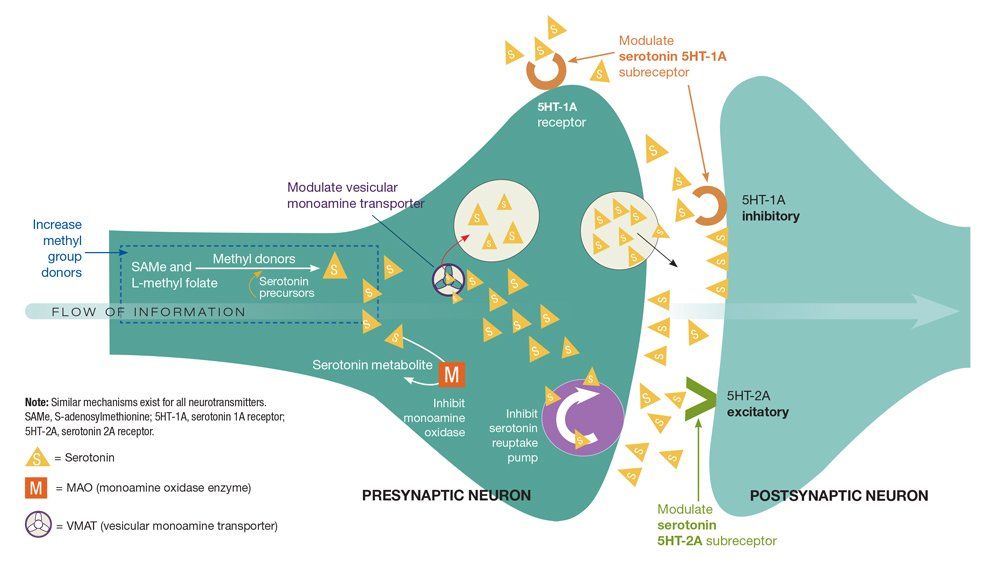
Table 1 – Suggested variables to be included in an analysis before making a treatment decision
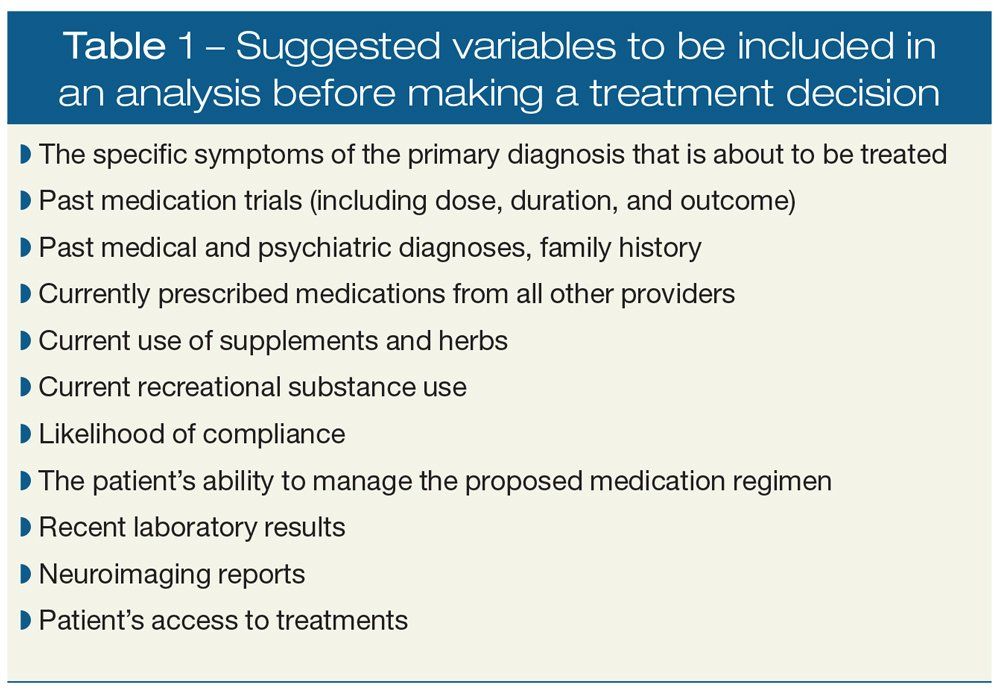
Table 2 – Important pharmacokinetic properties to consider about any medications that we are about to prescribe
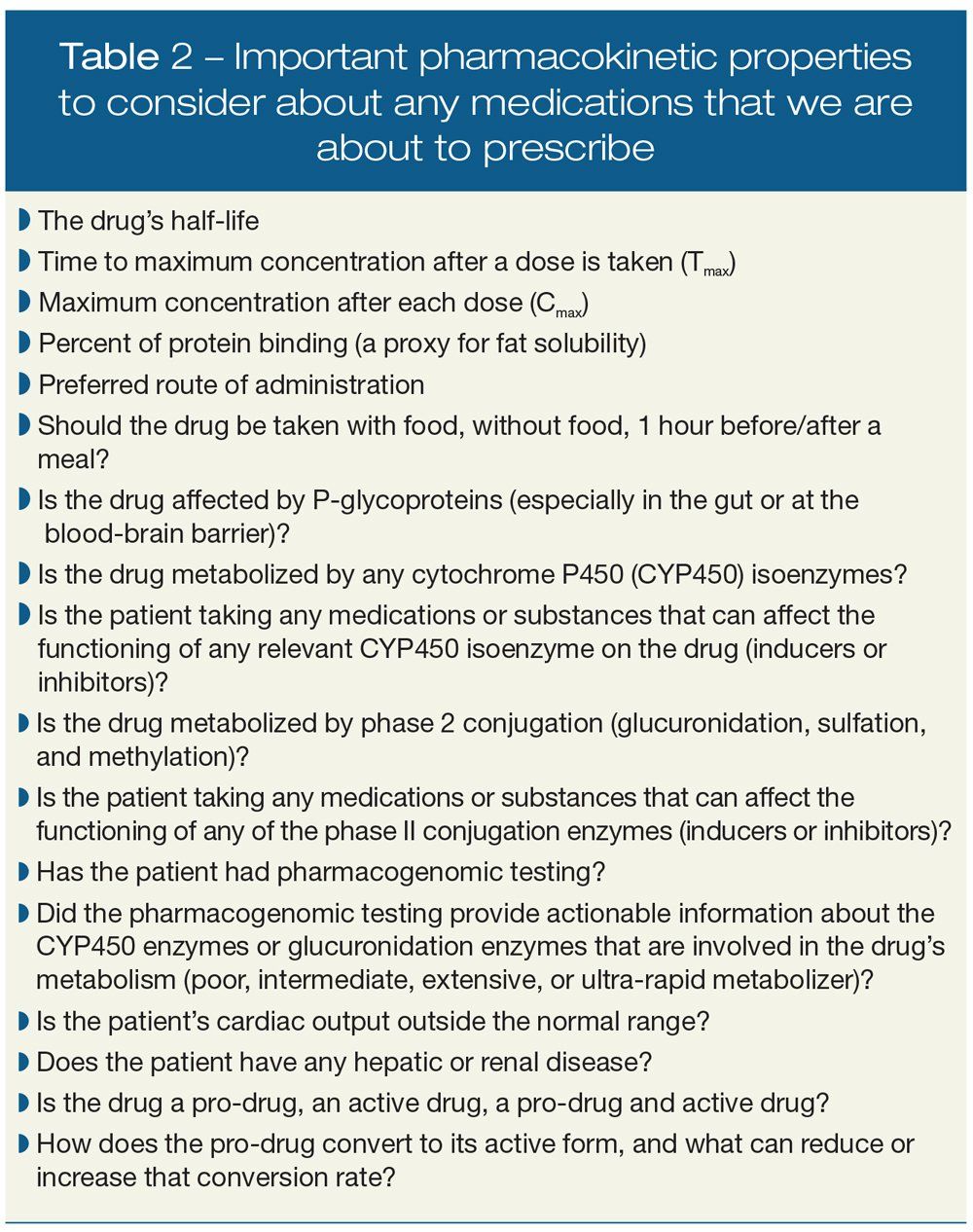
Table 3 – Important pharmacodynamicproperties to consider about any medication that we are about to prescribe
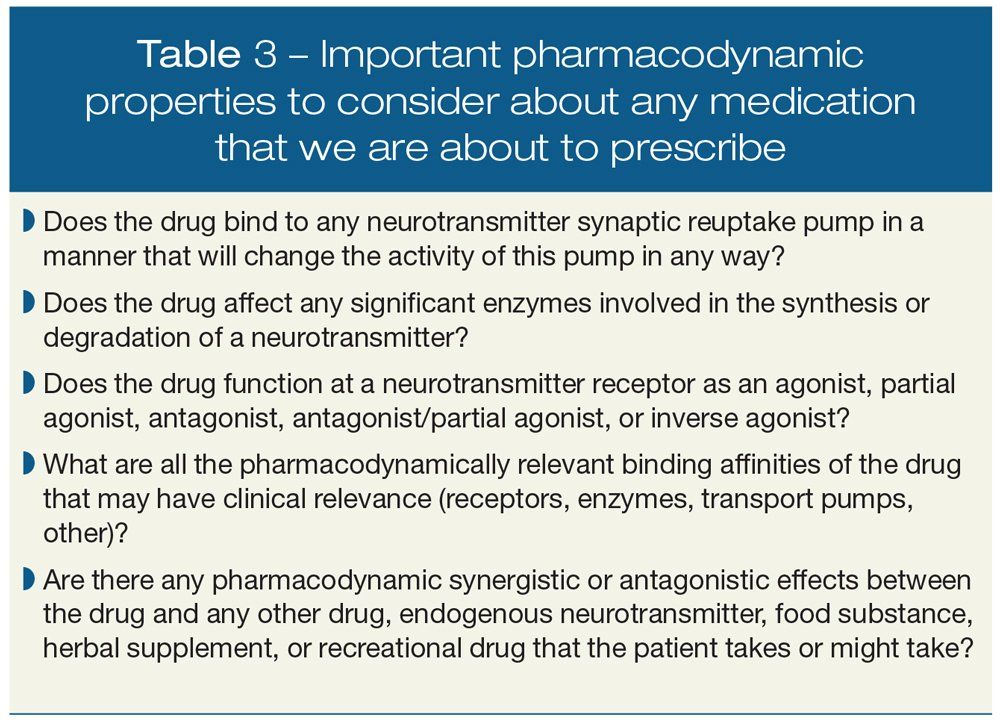
Table 4 – The various elements of the serotonin system
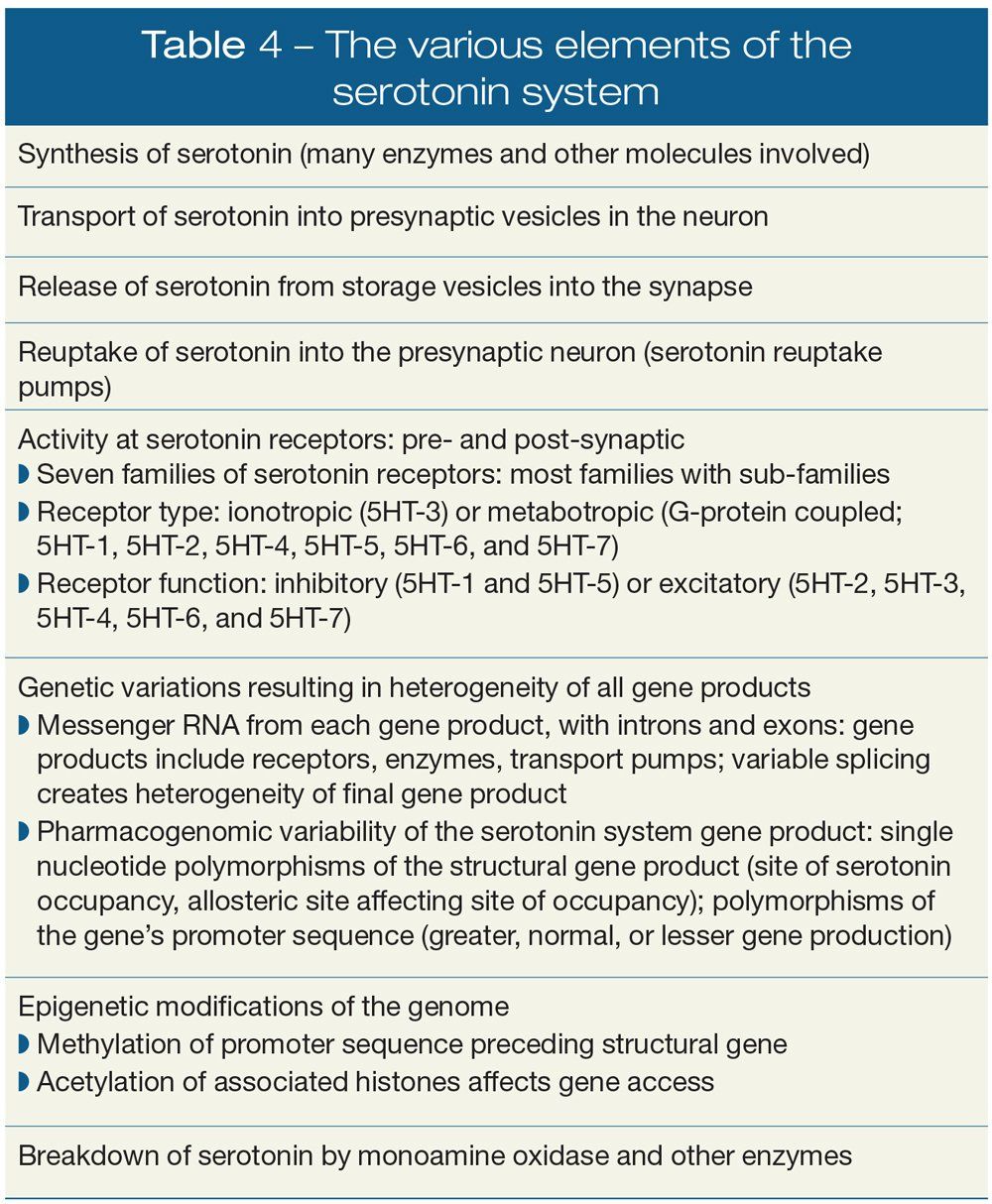
Premiere Date: November 20, 2017
Expiration Date: May 20, 2019
This activity offers CE credits for:
1. Physicians (CME)
2. Other
All other clinicians either will receive a CME Attendance Certificate or may choose any of the types of CE credit being offered.
ACTIVITY GOAL
To understand the various classes of antidepressants: their kinetics, dynamics, and mechanisms of action as well as future novel formulations.
LEARNING OBJECTIVES
At the end of this CE activity, participants should be able to:
• Understand the pharmacokinetic and pharmacodynamic heterogeneity of current antidepressants
• Describe the mechanism of action of antidepressants with a focus on the serotonin system
• Identify novel drugs in development for depression
TARGET AUDIENCE
This continuing medical education activity is intended for psychiatrists, psychologists, primary care physicians, physician assistants, nurse practitioners, and other health care professionals who seek to improve their care for patients with mental health disorders.
CREDIT INFORMATION
CME Credit (Physicians): This activity has been planned and implemented in accordance with the Essential Areas and policies of the Accreditation Council for Continuing Medical Education (ACCME) through the joint providership of CME Outfitters, LLC, and Psychiatric Times. CME Outfitters, LLC, is accredited by the ACCME to provide continuing medical education for physicians.
CME Outfitters designates this enduring material for a maximum of 1.5 AMA PRA Category 1 Credit™. Physicians should claim only the credit commensurate with the extent of their participation in the activity.
Note to Nurse Practitioners and Physician Assistants: AANPCP and AAPA accept certificates of participation for educational activities certified for AMA PRA Category 1 Credit™.
DISCLOSURE DECLARATION
It is the policy of CME Outfitters, LLC, to ensure independence, balance, objectivity, and scientific rigor and integrity in all of their CME/CE activities. Faculty must disclose to the participants any relationships with commercial companies whose products or devices may be mentioned in faculty presentations, or with the commercial supporter of this CME/CE activity. CME Outfitters, LLC, has evaluated, identified, and attempted to resolve any potential conflicts of interest through a rigorous content validation procedure, use of evidence-based data/research, and a multidisciplinary peer-review process.
The following information is for participant information only. It is not assumed that these relationships will have a negative impact on the presentations.
John J. Miller, MD, reports that he is on the Speakers Bureau for Sunovion, Otsuka, and Allergan; and he is a Consultant for Sunovion and Otsuka.
Heidi L. Combs, MD, (peer/content reviewer) has no disclosures to report.
Applicable Psychiatric Times staff and CME Outfitters staff have no disclosures to report.
UNLABELED USE DISCLOSURE
Faculty of this CME/CE activity may include discussion of products or devices that are not currently labeled for use by the FDA. The faculty have been informed of their responsibility to disclose to the audience if they will be discussing off-label or investigational uses (any uses not approved by the FDA) of products or devices. CME Outfitters, LLC, and the faculty do not endorse the use of any product outside of the FDA-labeled indications. Medical professionals should not utilize the procedures, products, or diagnosis techniques discussed during this activity without evaluation of their patient for contraindications or dangers of use.
Questions about this activity? Call us at 877.CME.PROS (877.263.7767)
In this 2-part series, the origins of antidepressants in the early 1900s and the discoveries that led to FDA approval of the first antidepressant in 1958 were reviewed in Part 1 (Psychiatric Times, October 2017). The development of the monoamine hypothesis of depression, our current FDA-approved armamentarium, and antidepressant augmentation strategies as well as the first FDA approval of an augmenting agent in 2007 were discussed.
Part 2 explores the significant pharmacokinetic and pharmacodynamic heterogeneity of current antidepressants and provides a review of the many potential drug targets that exist-with a focus on the serotonin system as we now understand it. Part 2 concludes with an overview of antidepressant drug development that is currently underway to hopefully provide novel agents.
Pharmacokinetics and pharmacodynamics: variety is the spice of life
No single antidepressant is considered superior. As such, choosing which antidepressant to prescribe to a patient is the result of a thoughtful analysis that includes many factors, both pharmacokinetic and pharmacodynamic. The analysis follows a careful history (Table 1). In addition, the patient’s understanding of depression as a psychiatric disorder that may improve with antidepressant treatment, his or her opinion about the use of antidepressant medication, ability to comply with a structured medication regimen, and competent understanding of the risk-to-benefit ratio of antidepressant treatment must be considered.
The criteria for a major depressive episode include both insomnia and hypersomnia, psychomotor retardation and agitation, decreased and increased appetite, and weight gain and loss. Hence, the specific symptoms of the patient’s depressive episode can inform which antidepressant choice may best improve these symptoms and which may worsen them. A comorbid psychiatric diagnosis can inform the choice of an antidepressant, which may help symptoms of both diagnoses. Family history can provide many clues about the likelihood of medication response, as shared genetic factors can contribute to the response to a particular antidepressant.
It is vital to obtain an accurate list of all current prescription medications, along with the reason it is being prescribed, its dose, and the duration of treatment. Factoring in the potential for drug-drug interactions on the basis of pharmacokinetics and pharmacodynamics can prevent significant adverse effects and possibly life-threatening outcomes.
Herbal supplements that patients often forget to list can have a major effect on a drug. One example is St John’s wort, which is a serotonin reuptake inhibitor and also a potent inducer of cytochrome P450 (CYP450) 3A4-the most common metabolic pathway of all prescription drugs. St John’s wort can dramatically lower the serum level of a medication that is metabolized by CYP450 3A4, which renders it less effective and possibly ineffective. Moreover, the use of an antidepressant that also has activity as a serotonin reuptake inhibitor can increase the risk of serotonin syndrome.
Many recreational drugs can contribute to antidepressant failure. Not uncommonly, use of the recreational drug may significantly contribute to the patient’s presenting symptoms. Alcohol use disorder can result in significant depression and anxiety. Excess caffeine intake can contribute to insomnia and psychomotor hyperactivity. Cigarette smoking (the smoke, not nicotine itself) results in significant induction of CYP450 1A2 levels, which will hypermetabolize any drug that utilizes this pathway. Methadone can cause depression and weight gain. Cocaine withdrawal can mimic a major depressive episode. These are just a few common examples.
If a patient has a history of nonadherence or poor adherence to treatment, consideration should be given to the use of a drug with a long half-life. Alternatively, recruiting a partner, friend, or family member to monitor medication adherence can have a huge impact on treatment effectiveness. Assessing the patient’s capacity to manage the medication regimen is also important. A person with psychomotor retardation, poor motivation, or cognitive impairment is less likely to successfully comply with treatment. Finally, a patient’s access to a particular treatment needs to be considered. Lack of health insurance, lack of medication coverage, rigid formularies, and geographical isolation can create barriers to access of medications. Tables 2 and 3 list pharmacokinetic and pharmacodynamic issues that need to be considered when choosing an antidepressant.
The more we learn, the less we know
In the early days of antidepressants, the 3 monoamines that helped transform our understanding of depression-serotonin, dopamine, and norepinephrine-created the hypothesis that changes in the brain levels of these neurotransmitters could treat depression. The importance of these 3 monoamines gained greater momentum in our understanding of mental illness as our medication armamentarium grew.
With the antipsychotic efficacy of chlorpromazine, it was discovered that too much dopamine in one part of the brain (mesolimbic tract) seemed to be related to psychosis and mania. Too much norepinephrine in another part of the brain ramped up anxiety and panic. Too little dopamine in the prefrontal cortex resulted in cognitive dysfunction and inattention. Decades of research in the basic science laboratories of universities around the world began to unravel the complexity of the monoamine story, which went far beyond a monoamine and its associated receptor communicating in a synapse of a neuron in the brain.
The completion of the human genome project in 2003 allowed for the identification of the many subreceptors, gene promoter variants, and single nucleotide polymorphisms that all contributed to individual variations to drugs. More recently, the field of epigenetics has exploded, which adds yet another complex layer to gene expression. Significantly, an individual’s experiences throughout life have been shown to affect and change these epigenetic factors.
To appreciate just how far we have come since the FDA approval of iproniazid in 1958, let us explore the peeling of just the serotonin onion (Table 4). Three scientists who were studying hypertension at the Cleveland Clinic in 1948 discovered a molecule released from platelets that resulted in vasoconstriction, synergistically working with the platelets to stop bleeding. They named this new vasoconstrictor serotonin. Subsequently, it was established that 90% of serotonin is in the gastrointestinal tract, and the remaining 10% is in the brain and in platelets.
The next challenge was to discover serotonin’s role in the 3 organ systems. A serotonin receptor was discovered, which created a logical sequence of information flow: serotonin is released from a presynaptic serotonin neuron and through entropy drifts across the synapse (Figure). As it drifts, some of the serotonin binds to and activates the serotonin post-synaptic receptor. Binding to this receptor activates a change across the post-synaptic neuron’s membrane. If the receptor is ionotropic (an ion channel that is opened or closed), the receptor affects the influx or outflux of a particular ion relevant to that receptor. If the receptor is metabotropic (a G-protein transmembrane-linked receptor), it results in many possible intracellular processes that can ultimately affect induction or suppression of gene expression, or activation or suppression of numerous intracellular processes.
The first serotonin receptor discovered was named the 5HT-1 receptor. Further research found a distinct second serotonin receptor, named 5HT-1B, while the first serotonin receptor was renamed 5HT-1A. In addition, a third serotonin receptor was identified: 5HT-1C. Careful analysis of these receptors’ amino acid sequences, and the discovery of additional serotonin receptors, indicated that there were different “families” of receptors that bound serotonin. Consequently, because of differences in their amino acid sequences, these serotonin receptors could be subdivided by similarities and differences.
The 5HT-1C receptor was structurally more similar to the 5HT-2A and 5HT-2B receptors than to the other 5HT-1 receptors, so it was renamed 5HT-2C. To this day, there is no 5HT-1C receptor, but we now have 5HT-1D, 5HT-1E, and 5HT-1F receptors.
In 1993 the seventh and final family of serotonin receptors was discovered, appropriately named the 5HT-7 receptor. With the completion of the human genome sequencing in 2003, it is well accepted that there are no additional families of serotonin receptors. Having so many variations for the activation of any given G-protein at the cell surface allows for infinite possibilities of post-synaptic neuronal response to a single neurotransmitter, such as serotonin.
However, it would be too easy if the story ended here. Each gene that codes for the mRNA of each receptor contains introns and exons, which allows each serotonin subreceptor to be spliced in alternative sequences, providing another layer of complexity.
A single gene for a single receptor can have a range of single nucleotide polymorphisms (SNPs) that preserve the functioning of the gene but result in a range of binding affinity variability or response variability for the same neurotransmitter-in this case, serotonin. The change in a single nucleotide of one gene can occur in many different locations, each of which can alter the gene’s function in different ways. The SNPs can occur on the promoter sequence preceding the gene, which can affect the number of gene products transcribed-affecting the final number of receptors in the neuron’s membrane.
Alternatively, SNPs can occur at some structural site in the gene, which can directly affect the 3-dimensional structure of the neurotransmitter-receptor interface, or have a distant allosteric effect on the receptor that also influences receptor function. In both cases, the SNP on the structural region of the receptor’s gene can result in 3 different outcomes: no change in receptor activity, a decrease in receptor activity, or an increase in receptor activity.
One of the many studies that resulted from the Sequenced Treatment Alternatives to Relieve Depression (STAR*D) trial supports this idea of heterogeneity. McMahon and colleagues1 report, “Participants who were homozygous for the A allele had an 18% reduction in absolute risk of having no response to treatment, compared with those homozygous for the other allele.”
A comprehensive review summarized much of the science related to the impact of epigenetic changes on depression, and how these epigenetic modifications appear to be reversed with current antidepressant treatments. This ongoing research provides a glimpse into the evolving understanding of the relationship between epigenetics and depression.2 Epigenetic modifications that affect levels of brain-derived neurotrophic factor (BDNF) and the glucocorticoid receptor have been most studied. When the brains of individuals who had a history of childhood abuse and committed suicide were examined, variations in the degree of methylation of the promoter sequence of the glucocorticoid receptor were discovered. Several studies demonstrated a decrease in DNA methylation (which would increase gene transcription) associated with an increase in BDNF in individuals treated with various antidepressants.2
An important paradigm shift occurred when drug development moved from a focus on blocking serotonin reuptake pumps to targeting specific serotonin receptors. Arguably, blocking a serotonin reuptake pump is a very crude way to modulate the serotonin system. The result is a global increase in synaptic serotonin, which results in the agonism of all 7 serotonin receptor families and their associated subreceptors.
Post-synaptic serotonin receptors can execute their message on many different neuronal types. Post-synaptic serotonin receptor modulation may ultimately result in changes in concentration of a different neurotransmitter in a different part of the brain. Downstream effects of serotonin receptor activity may increase or decrease synaptic levels of serotonin, dopamine, norepinephrine, acetylcholine, glutamate, and GABA. In addition, serotonin receptors can regulate prolactin, oxytocin, cortisol, and substance P, just to name a few.
When you extrapolate the complexity of the serotonin system to all neurotransmitters that may affect depression, an infinite possibility of drug targets exists. This is very good news for the future of drug development to treat depression-thus far, we have only scraped the surface of potential mechanisms of action.
Looking to the future: opioids, magic mushrooms, and Special K
Research on novel antidepressant molecules that function outside of the monoamine hypothesis of depression has been somewhat of a roller coaster over the past 3 decades. Initially promising drug classes such as neuropeptide Y modulators, substance P analogs, corticotropin-releasing hormone (AKA factor) receptor antagonists, and metabotropic glutamate receptor agonists (especially subtypes 2 and 3) ultimately failed as treatment options. One continued frustration and clinical limitation of our current antidepressants that follow the monoamine mechanism is that it can take from 2 to 8 weeks to achieve an adequate antidepressant effect. It appears that a common denominator of the delayed antidepressant response correlates with increasing levels of BDNF as the depression lifts. This increase in BDNF is associated with increased synaptogenesis in the brain’s hippocampus-a crucial gateway connecting memories and emotions-which may often be atrophied in cases of chronic depression and chronic stress. When the depression has resolved, the hippocampus increases in size.
The recent excitement about ketamine is that it has been shown to have immediate antidepressant effects, which correlate with increasing brain levels of BDNF.3 Ketamine is a racemic mixture of S-ketamine (esketamine) and R-ketamine (arketamine), and both molecules are antagonists at the glutamate NMDA ion channel. Esketamine is 3 to 4 times more potent than arketamine. Arketamine appears to have a greater antidepressant effect than esketamine. Ketamine continues to be aggressively studied as a possible “next-generation” antidepressant, and the racemate esketamine delivered intranasally is likely to be the first formulation to apply for FDA approval.
Both esketamine and arketamine are metabolized to hydroxynorketamine, which activates the glutamate AMPA ion channel. Increasing AMPA glutamate ionotropic receptors may produce an antidepressant effect, and with no dissociative adverse effects and no abuse potential. This metabolite has no activity on the NMDA glutamate ion channel and may be responsible for the increase in BDNF.4 The discovery in 2016 that hydroxynorketamine has antidepressant efficacy in mice (likely related to increased BDNF), without the abuse potential or dissociative adverse effects of ketamine, may provide a new avenue for drug development.
The clinical use of ketamine for the treatment of refractory depression is still considered experimental, and much remains to be learned about optimal dosing, delivery mechanisms, short- and long-term adverse effects, and duration and frequency of treatment.
Another class of drugs with a resurgence of interest for the treatment of refractory depression is the hallucinogens. Psilocybin, LSD, and mescaline are all serotonin analogs that have significant agonism at the 5HT-2A receptor. Most of the recent studies in refractory depression have involved psilocybin.
In one study, patients with treatment-resistant depression received 2 oral doses of psilocybin (10 mg and 25 mg in a supportive setting, 7 days apart). One week after they received the second dose, 67% of patients had an improvement in symptoms, and 58% maintained this response at 3 months.5 Although the data on psilocybin are in the early stages, and the current studies are open label, the findings are very intriguing.
The buprenorphine-samidorphan combination results in kappa-opioid antagonism. Buprenorphine is an antagonist/partial agonist at the mu-opioid receptor and an antagonist at the kappa-opioid receptor (this is the putative antidepressant action of the combination drug). Samidorphan is an antagonist at the mu-opioid receptor, with tighter binding affinity than buprenorphine; hence, it prevents the mu-opioid analgesic effect of buprenorphine.
Rapastinel is being studied as an augmentation agent for treatment-resistant major depression. It received FDA fast-track status on March 3, 2014, and has a novel mechanism of action by selectively binding as an antagonist/partial agonist at an allosteric site on the glycine binding region of the NMDA glutamate receptor. Rapastinel is administered intravenously and is a rapidly acting drug that demonstrates antidepressant as well as cognitive-enhancing properties likely related to its activity as an antagonist/and partial agonist of the glycine binding site on the NMDA glutamate ion channel.
There has been increased interest in the role of inflammation in causing depression, exacerbating depression, and/or contributing to non-response in patients with treatment-resistant depression. Raison and colleagues6 looked at infliximab, a monoclonal antibody that inhibits the inflammatory cytokine tumor necrosis factor, in a cohort of 60 outpatients whose depression was moderately resistant to antidepressants. The subgroup of patients with elevated baseline levels of inflammatory biomarkers, including tumor necrosis factor and high-sensitivity C-reactive protein, demonstrated some improvement in their depressive symptoms compared with patients whose baseline levels of inflammatory biomarkers were not elevated.6
Conclusion: looking forward to the next 100 years
MDD is a common and often disabling mental illness that has plagued humanity since the existence of historical records. The past 100 years has been a time of impressive advances in medicine, neuropsychiatry, pharmacology, and our understanding of the circuitry of the brain.
The birth of the monoamine hypothesis of depression in the early 1960s revolutionized our understanding of, and ability to treat, depression. However, full remission from a major depressive episode is hard to achieve, and even obtaining a 50% response in patients with depressive symptoms can be challenging.
All of our FDA-approved antidepressants have mechanisms of action that are grounded in the monoamine hypothesis. Over the past several decades, there have been exciting breakthroughs of novel mechanisms of action-all too often followed by disappointment after extensive basic science research and early-phase clinical trials. However, we must always look to the future with optimism. We never know when a new molecule discovered by serendipity or an idea coalescing in the mind of some graduate student will bear the fruit of our next paradigm-changing antidepressant.
POST-TEST
Post-tests, credit request forms, and activity evaluations must be completed online at www.cmeoutfitters.com/PT (requires free account activation), and participants can print their certificate or statement of credit immediately (80% pass rate required). This Web site supports all browsers except Internet Explorer for Mac. For complete technical requirements and privacy policy, visit www.neurosciencecme.com/technical.asp.
Need Additional CME Credit?
Check Out These Free CME Activities- Hurry, Some Expire Soon!
Using Motivational Interviewing to Improve Health Behaviors in Psychotic Patients
Marie E. Rueve, MD and Laura E. Maphis, PhD
Expiration Date: November 20, 2017
Autism Spectrum Disorders and Psychiatry: Update on Diagnostic and Treatment Considerations
Jennifer Foss-Feig, PhD and James McPartland, PhD
Expiration Date: December 20, 2017
Update on Diagnostic Issues for Borderline Personality Disorder
Peter Fonagy, PhD, Chloe Campbell, PhD, and Anthony W. Bateman, MA, FRCPsych
Expiration Date: January 20, 2018







